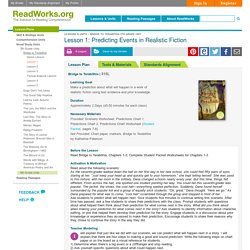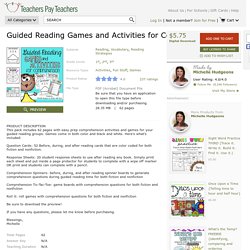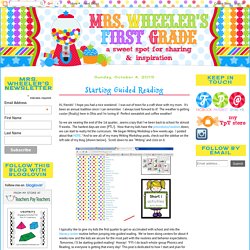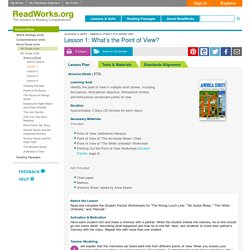

Teach reading comprehension with Post-it Notes. Good readers are active readers...They monitor their thinking while they read, and comprehension levels are much higher.

You can teach better reading comprehension skills by using Post-it notes! As an adult, you probably monitor your thinking while reading automatically, without even realizing it! When students read, they should be questioning, wondering, and really thinking about what is happening in the story, not just reading words. There are always those students who can read very fluently, but cannot remember what they read about.
This activity is especially helpful for those students, but will benefit the entire class by improving comprehension. This activity is an excellent one to teach at the beginning of the school year, and is something you can require students to use throughout the year. Introduce the activity by constructing an Anchor Chart during a whole group lesson. ! Students can use this activity throughout the year. You Might be a First Grader... Okay, I'll say it...sometimes my blog titles make me giggle.

I'm not sure any of you get a chuckle but I do. That one is a play on Teach Me How to Dougie...oh....the giggles. Back to business ::puts on teacher face:: I go back to school in 8 days. Well officially back because I've been going in periodically anyway. But I'm back "on the clock" next Tuesday morning with meetings and what not. 154284. Cause and Effect Fifth Grade Reading Lesson 1, Standards Alignment, Worksheets, Activities. Will explain that just like we did with our scenario, we can predict what will happen next in a story.

I will explain that there are four steps to making a good and sound prediction. Write the following steps on chart paper or on the board as a visual reference for students. 1) Determine when there’s a big event or a cliffhanger and stop reading. 2) Ask yourself specific questions about what could happen next. 3) Access prior knowledge or experience to think about what could happen next. 4) Make a meaningful prediction using text evidence. I will begin reading aloud Chapter 1 of Bridge to Terabithia and make a prediction about a big event in this chapter.
(Have students follow along using their copies of the book.) Now I need to ask specific questions to give me more information about what could happen next. Next, I will use prior knowledge to think about the answers to these questions. Guided Reading Games and Activities for... by Michelle Hudgeons. <div class="deployment_message_block"><span> Hi, You need to enable javascript on your browser to use TpT.

<a href=" target="_blank">See how this improves your TpT experience</a>. </span></div> Mrs. Wheeler's First Grade Tidbits: Starting Guided Reading. Hi, friends!

I hope you had a nice weekend. I was out of town for a craft show with my mom. First Grade Reading Read-Aloud Lesson, Standards Alignment, Worksheets, Activities. Read page 12 out loud, then stop.

Page 12 ends with, “...more useful than eyes.” Teacher asks: Is it light or dark outside when Bat is flying? Students answer: It is dark outside when Bat is flying. Teacher asks: If it is dark outside when Bat is flying, is Bat flying during the daytime or during the nighttime? Students answer: Bat is flying during the nighttime. Teacher says (models thinking): The book says that Bat does not need to see in the darkness. Read pages 14 and 15 out loud, then stop. Teacher asks: What is the first thing Bat does when she flies to create the sound picture?
Students answer: Bat shouts. Teacher asks: Bat shouts, sending out her voice all around her. Students answer: The sound of Bat’s voice echoes, or comes singing back to her. Read page 16 out loud, then stop. Epic! - Books for Kids. Coffee Cups and Lesson Plans: Reading Comprehension with Bloom Balls.
Character Descriptions Worksheet. Teach reading comprehension with Post-it Notes. Teaching Kids to Summarize using Basic Signal Words. Retelling, Classroom and Anchor Charts. Reading Comprehension, Classroom Freebies and Reading. Character Sixth Grade Reading Lesson 1, Standards Alignment, Worksheets, Activities. Will explain that the memories we heard were told from different points of view.

When you shared your memory with your partner, you spoke using “I.” For example, “I remember the taste of my grandma’s chili.” When you speak using “I,” you are using the first-person point of view. When your partner shared your memory with the class, he or she spoke using the third-person point of view. For example, “Jason remembered the taste of his grandma’s chili.” In a story told from the first-person point of view, the narrator tells the story and is a character in the story. I will introduce first-person point of view by explaining that the narrator is telling the story and is a character in the story.
I will introduce the third-person point of view by explaining that the narrator is telling the story from someone else’s viewpoint and is an observer—not a character in the story. I will further explain that there are three types of third-person point of view: objective, limited, and omniscient.